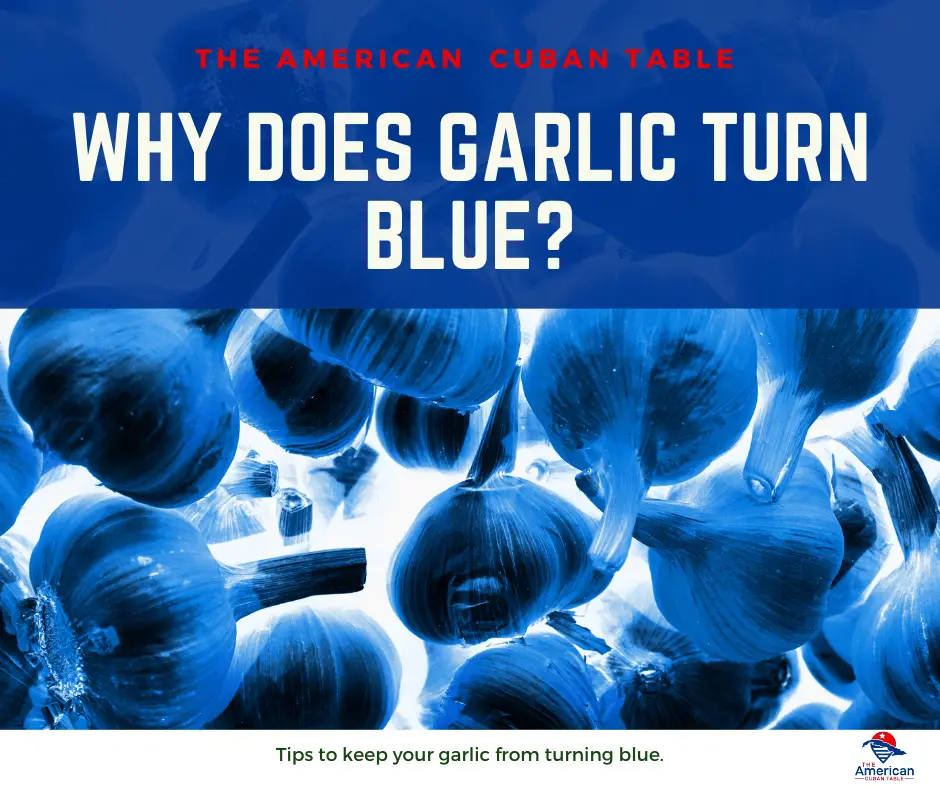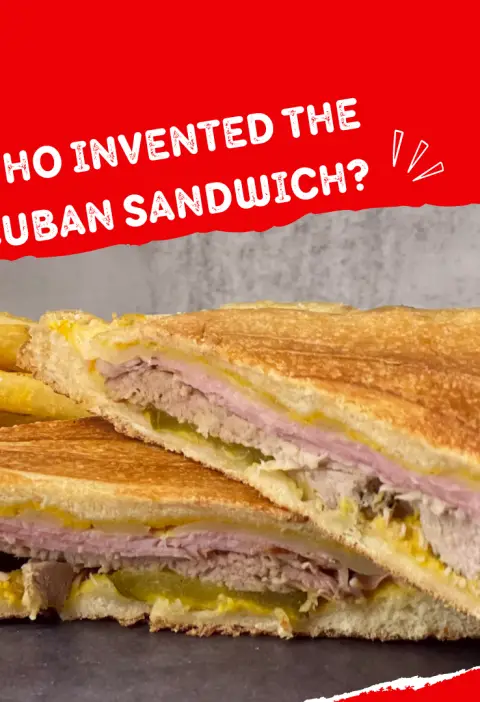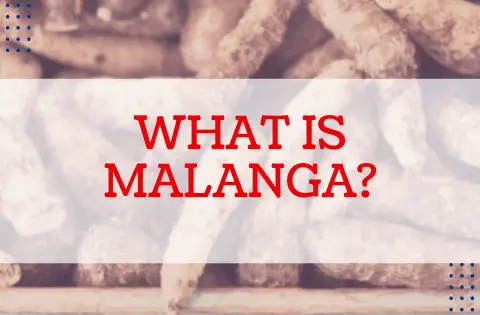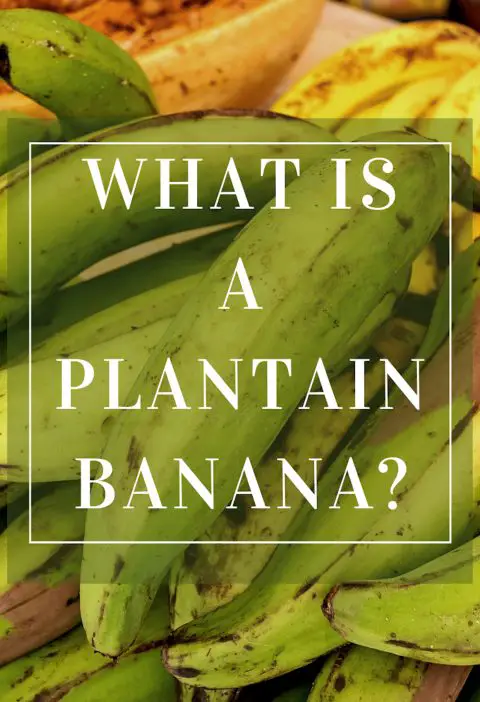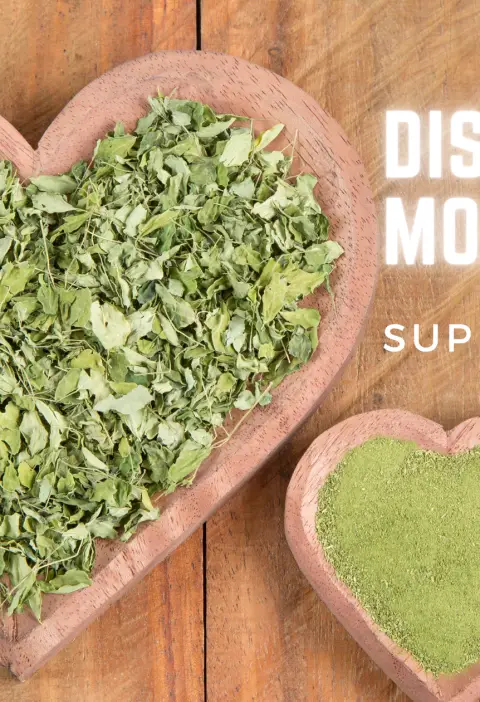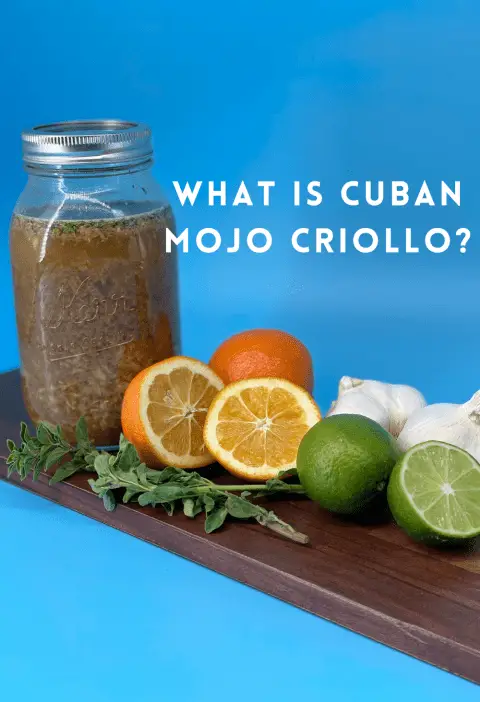I use garlic almost everyday. Garlic is a staple in Cuban cooking. Every recipe calls for it and even when it doesn’t I’ll add it anyway! Most of the time, I add the garlic where it’s called for and everything turns out great. But… sometimes when I am making a garlic mojo sauce the garlic turns blue! Has this ever happened to you? Why does garlic turn blue?
Garlic turns a greenish to bluish color when it is cooked with an acid. The color change occurs because there is a reaction between enzymes and sulfur-containing amino acids in the garlic. Blue and green pigments occur when these enzymes are activated by a mild acid. Isoalliin is the name of the compound that is responsible for this reaction and it is formed when the garlic is cool or cold.
Now that we know why garlic is changing color, how do we stop it from changing color?
Preventing Garlic Discoloration: Actionable Steps
Garlic is a plant that contains an odorless sulfur compound called alliin. It also contains an enzyme called alliinase, which when mixed with the presence of cutting or crushing creates organophosphate compounds known as allicins. These compounds will build up as the garlic gets older. Buying fresh garlic will have less sulfur and enzymes that are just waiting to react. However, in many cases you don’t know how long garlic has been sitting in the store and if you can’t purchase garlic from your local farmer’s market there are still some things you can do.
- Use cold garlic. Don’t take the garlic out of the refrigerator until ready to use it. The chemical reactions will start occurring with the first cut, grate or mince.
- Cook hot. Cook garlic using high temperatures. Sauteing garlic at low temperatures can cause it to turn green quickly. The higher temperature will deactivate the enzymes.
- Cook separately. If you are cooking onions and garlic together, (like in many Cuban recipes) cook the onions first. Onions contain some of the same sulfur compounds as garlic, so when they are cooked together we are giving them extra building blocks to combine with each other and change.
- Do not add acid. For example when making a garlic sauce that has garlic and lime or lemon juice, cook the garlic on high heat and then add the lime or lemon juice. Letting the garlic cook first will deactivate its enzymes.
- Use distilled water. When pickling garlic, use distilled water because it does not have any metals that can be in tap water.
- Use iodine-free salt. Kosher salt and sea salt are good alternatives because they do not have iodine in them.
- Use stainless steel or ceramic cookware. Don’t use cast iron, copper or aluminum cookware because the metals will cause the chemical reactions we are trying to avoid.
Safety of Green or Blue Garlic: What You Need to Know
Yes, it is safe to eat garlic that has turned a greenish or bluish color from cooking or pickling. In fact, in China they deliberately turn garlic into a jade green color during the Lunar New Year and Spring Festival. It is considered healthy and beautiful.
It is also safe to eat garlic that has sprouted green sprouts. These green sprouts occur as the garlic ages. The sprouts can be a bit bitter, so if you are using the garlic as the main ingredient like in a garlic sauce for yucca or the whole head of garlic and it has sprouted, just cut it out or don’t use it. However, if it’s going in a marinara sauce or chicken fricassee don’t worry about it.
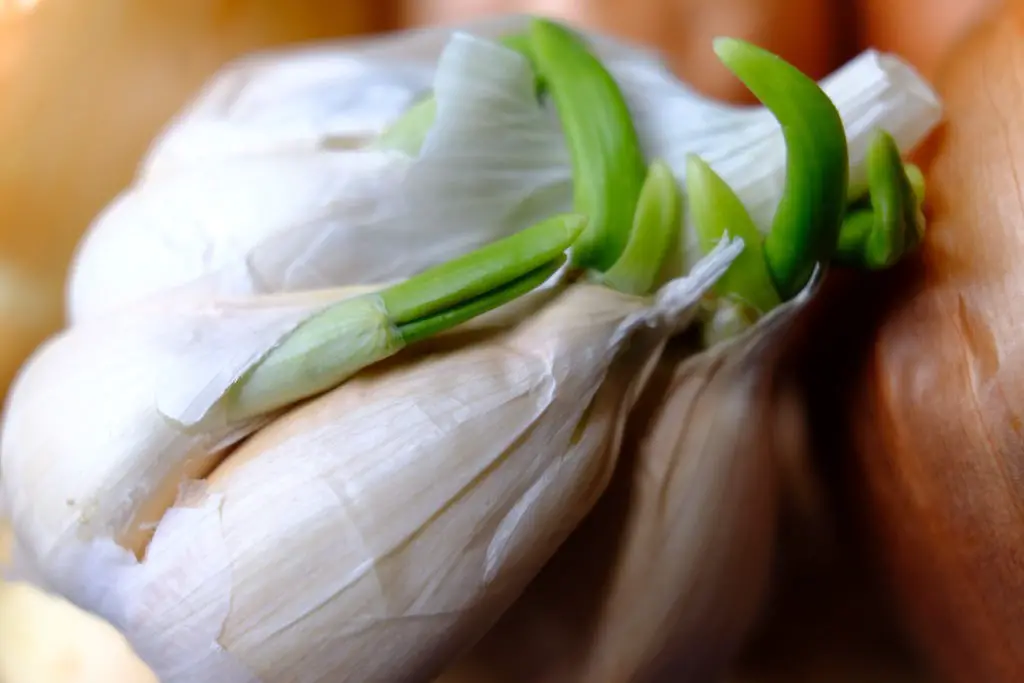
Does Green Garlic Mean it is Bad?
Like I said above, if the garlic has turned a greenish or bluish color because it was cooked with an acid, it is ok to eat. It isn’t bad. If your garlic is green because it has sprouted and the little green germ is growing it isn’t bad either and won’t hurt you if you eat it. The germ is just another garlic trying to grow from garlic. It most likely started growing because it has been exposed to too much light, heat or moisture. The worst that could happen is a bitter taste in your dish if the garlic remains raw. When garlic is cooked, for example in black beans, you won’t taste a difference. If the garlic is still firm and is still white in color just cut out the germ and use it.
Storing Garlic Properly: Tips for Longevity
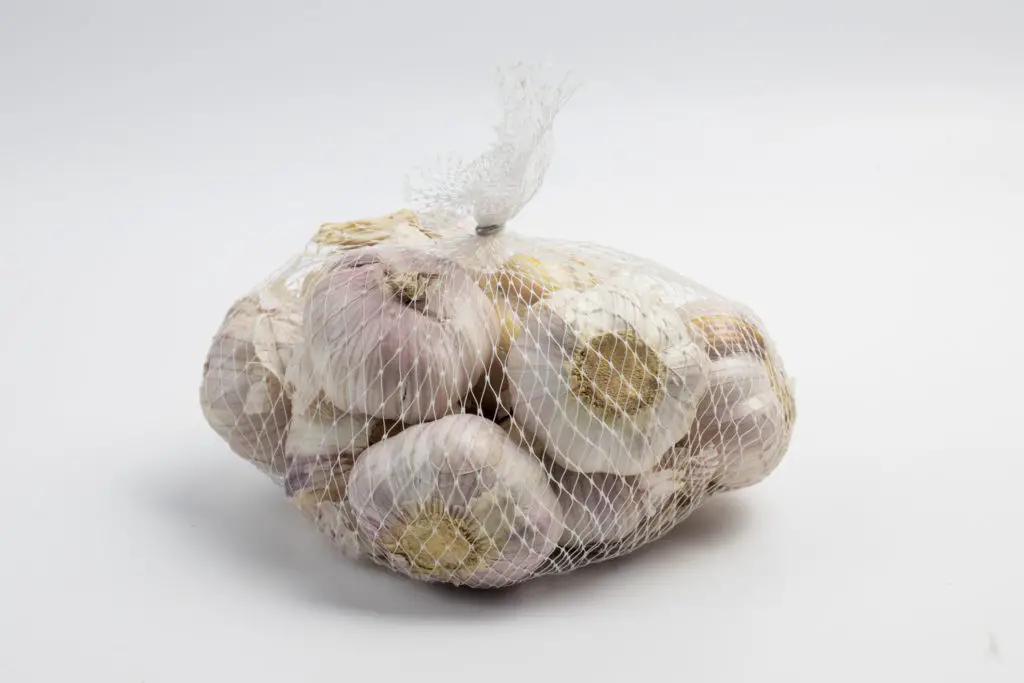
The most economical way to buy garlic is to buy unpeeled whole bulbs of garlic. It is also the way to get the longest shelf life from garlic. Whole unpeeled bulbs of garlic will last up to six months if stored properly. So, what does garlic like? It likes to be stored in a cool, dry dark place. You might be saying that sounds like the refrigerator would be the ideal place. Nope, the ideal temperature is between 60 – 65 degrees. Using a breathable mesh bag or basket is ideal. If you do buy or have leftover unpeeled garlic it can be stored in the fridge. It will only last around two weeks however in a tightly covered container.
Freezing Garlic: Methods and Tips
Yes, you can freeze garlic. Freezing garlic is simple because you can freeze the garlic as raw whole unpeeled bulbs, as individual cloves (peeled or unpeeled) or chopped or minced. First, if you are freezing whole bulbs or individual cloves put them in airtight containers or freezer bags. I say airtight because you don’t want the garlic odor to escape and take over your freezer. To be safe I would recommend a double bag if you are using freezer bags. Tip #1 – frozen garlic is much easier to peel.
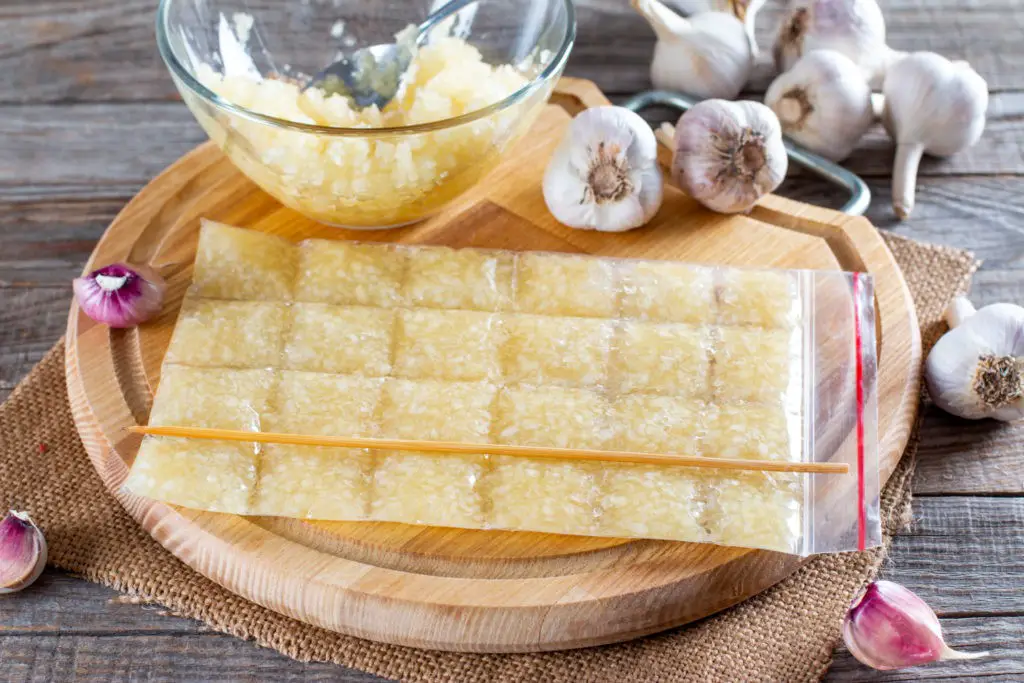
Second, you can freeze garlic in olive oil. A rule of thumb would be to use a ratio of 1 part garlic to 2 parts oil. The oil will keep it from freezing solid so you can take as little or as much as you need as needed. Tip #2 – puree the garlic and add olive oil and freeze in ice cube trays for easy portion sizes. Again, make sure to cover tightly.
Final Thoughts
Whether you are eating more garlic for the many health benefits or just because garlic makes everything taste better, I hope I have given you some peace of mind when your garlic turns green to blue, don’t worry it’s still edible and in some parts of the world it’s considered beautiful.
Check out my garlic mojo sauce for yuca below!
Garlic Mojo Sauce
1 cup olive oil
1/2 cup garlic
1/2 onion diced
2 limes
First, crush garlic using a mortar and pestle. Heat the olive oil in a sauté pan on medium high heat. Add the garlic and onion and cook for 5-10 minutes. Turn down the heat and stir in the juice from the two limes and season to taste with salt. Let sauce cook and combine for two minutes. Remove from heat and serve over yuca or lechon.
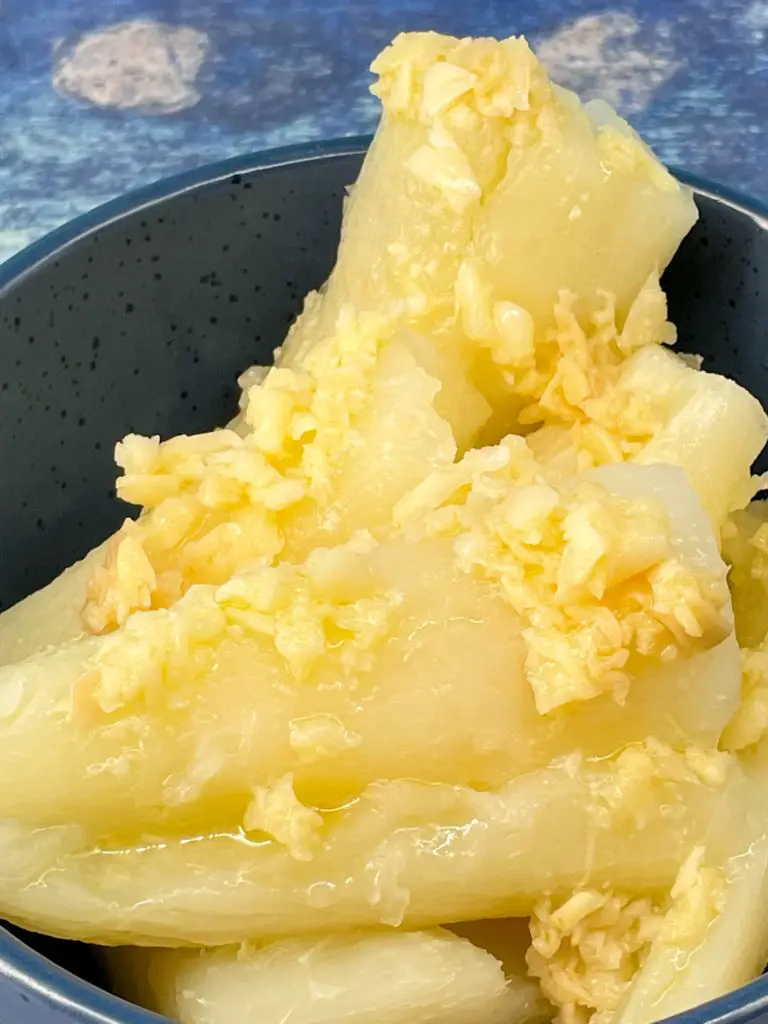

Explore the Essence of Cuban Cuisine with Noelle – a devoted culinary enthusiast enamored by Cuban flavors for over 30 years. Guided by her husband’s mami and abuela, she refined her skills using the ‘by eye’ technique, converting cherished recipes into precise culinary treasures. Continuously enriching her expertise, Noelle actively engages in cooking classes, infusing her platform with measured recipes and an authentic taste of Cuban food, inviting the world to savor the essence of this vibrant cuisine.

